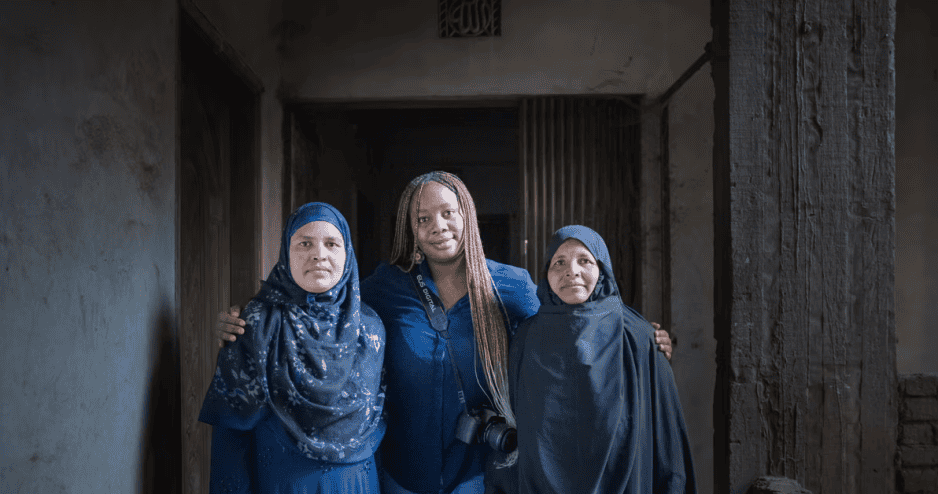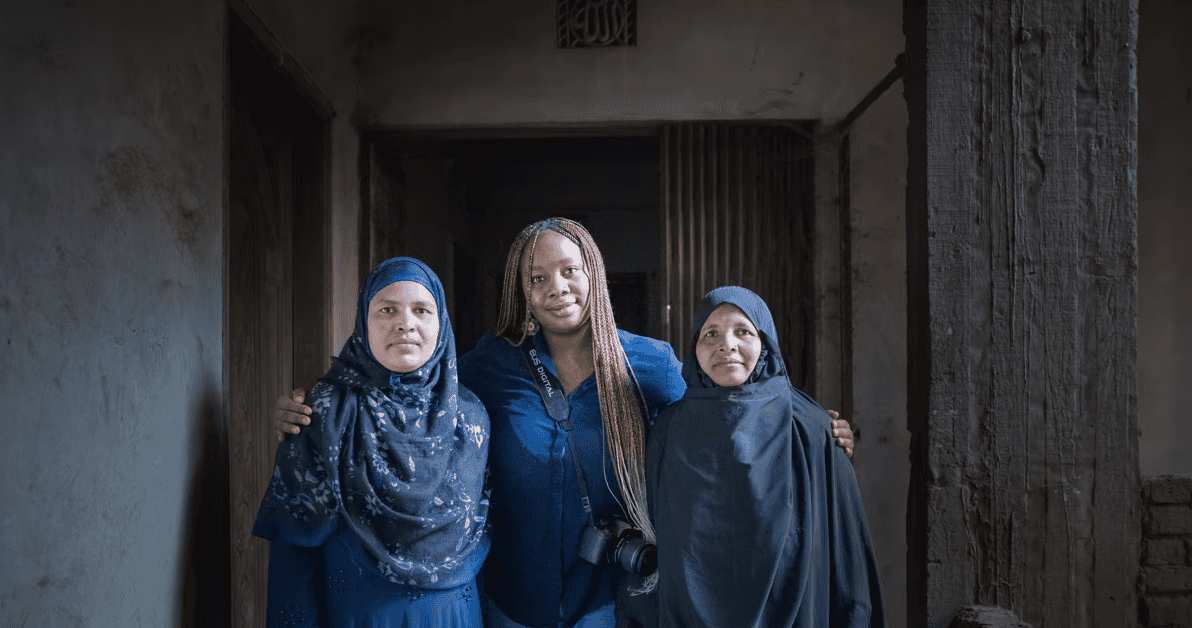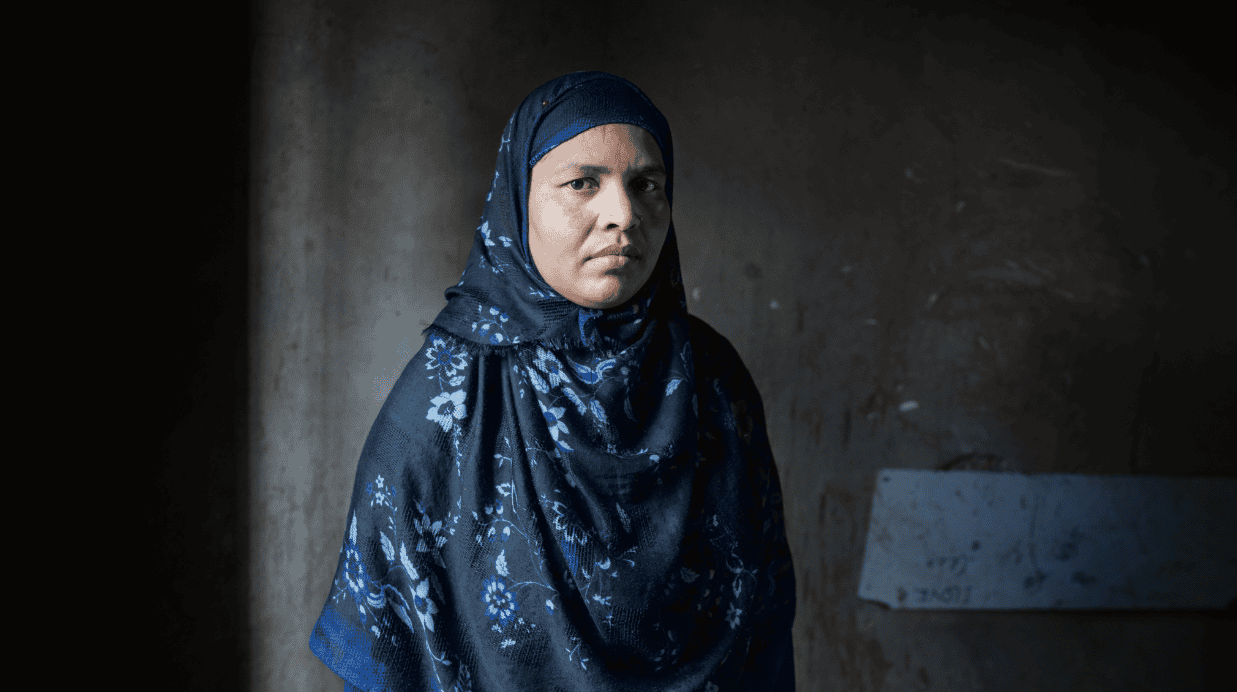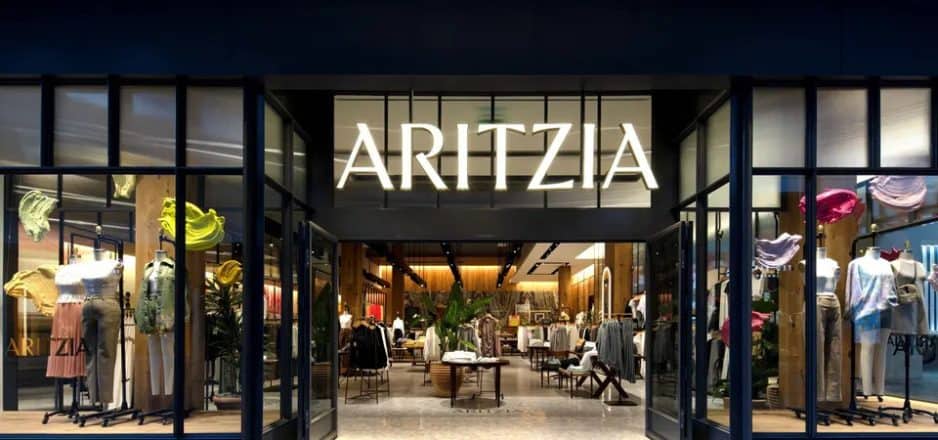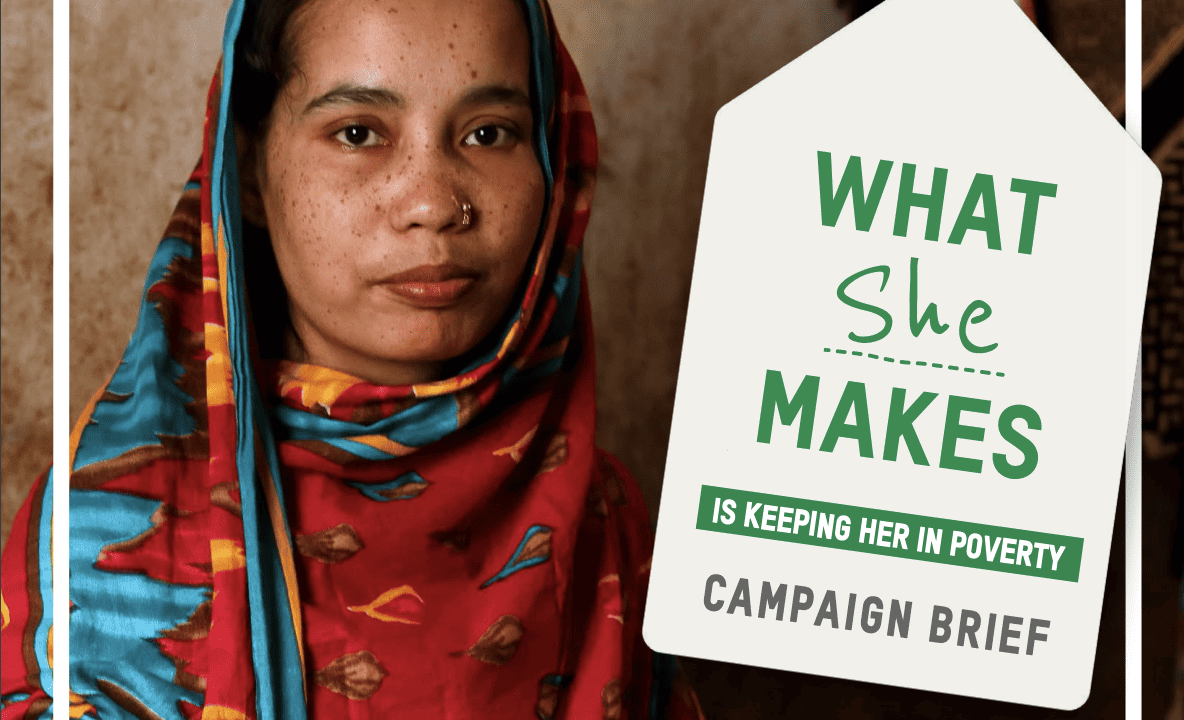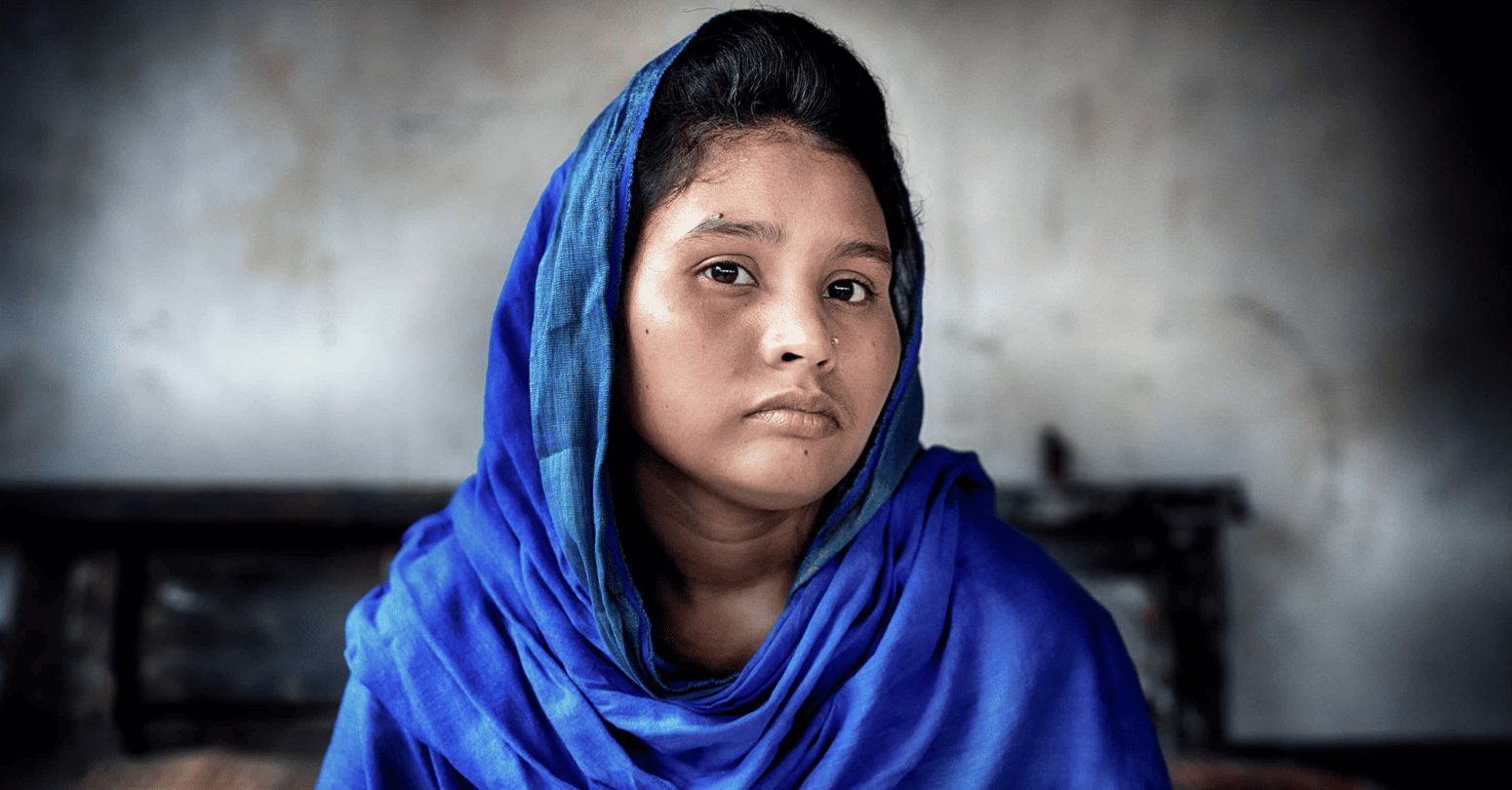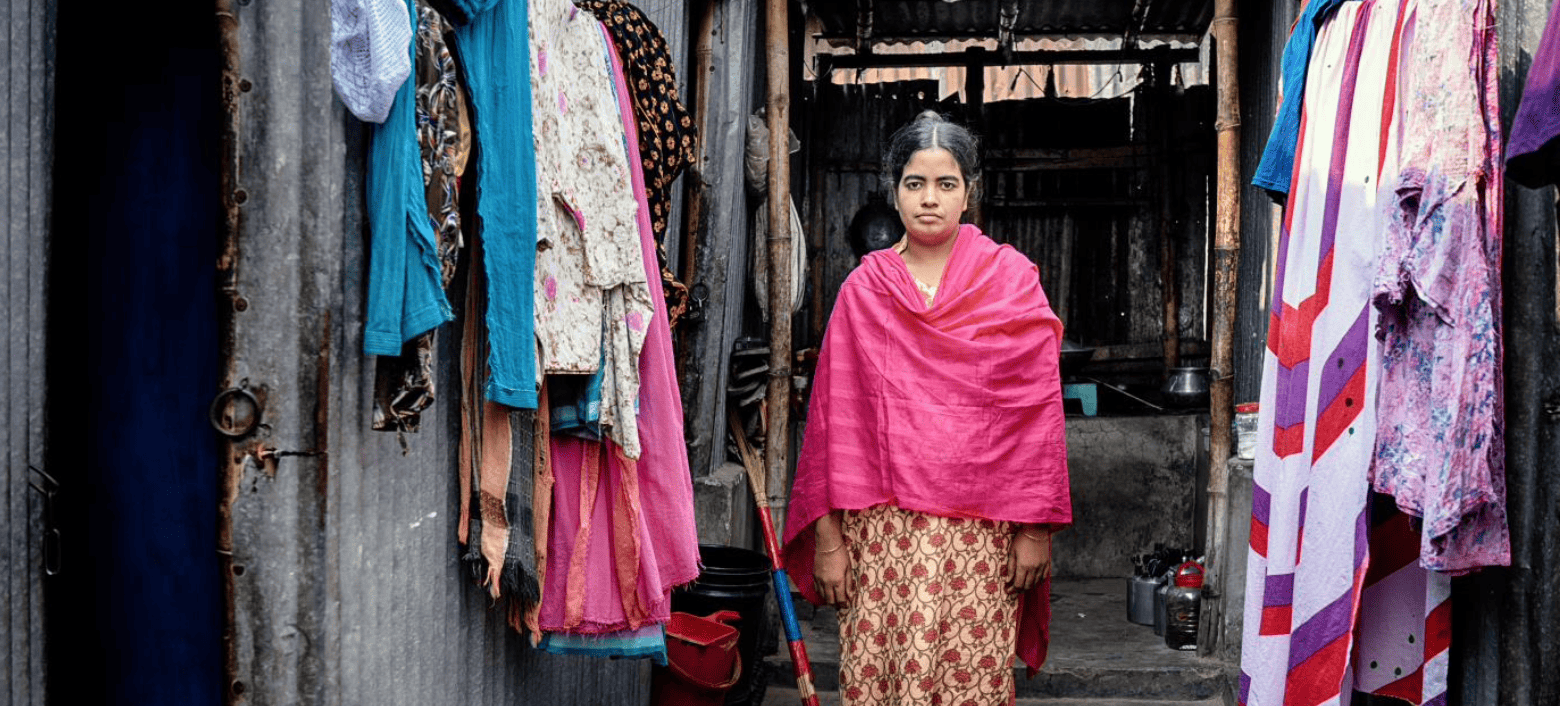Millions of women who make our clothes across sourcing countries are paid less than half of what they need to escape poverty, despite their hard work. The What She Makes campaign calls on Canadian clothing brands like Lululemon and Roots to commit to paying a living wage—one that covers a dignified standard of living for workers and their families. With billions in profits, these brands have the power to break the cycle of exploitation. Read the updated campaign brief and get in touch with Mwangala to learn more about how you can help make a difference.
Category: Resources
From Tragedy to Triumph: Nilufa’s Journey and the Call for Justice
As we mark the 11th anniversary of the Rana Plaza disaster, Nilufa Yasmin’s story is a poignant reminder of the devastating human cost behind the clothes we wear. On that fateful day on April 24, 2013, the deadliest garment factory accident in history took place where an eight-story building housing five garment factories collapsed, claiming the lives of 1,135 garment workers. Nilufa’s life changed forever. “It’s hard for me to describe the day, I will not be able to sleep at night if I tell you,” she told me, and those words stuck with me. Trapped under the rubble and a metal beam, she suffered a fractured spinal cord, enduring not only physical pain but also the trauma of witnessing the collapse of a workplace that failed to prioritize the safety of its workers. The loss of her colleagues and friends and a way to provide for herself and her family still sticks with her a decade after the tragedy. I had the privilege and honor of meeting Nilufa last year in Dhaka. Her resilience in the face of adversity continues to inspire me every day.
“It’s hard for me to describe the day, I will not be able to sleep at night if I tell you,”
Nilufa
Nilufa’s testimony echoes the sentiments of thousands of garment workers in Bangladesh who were on the streets of Dhaka last fall, fighting for fair wages and safe working conditions. Their demands for living wages were met with increasing violence across Dhaka between October and December of last year. Reports emerged of merciless beatings targeting protesters and workers, as their peaceful demonstrations for a livable wage turned into violent clashes with authorities. Despite the risks, loss of life, and the brutality they faced, garment workers stood firm in their demands for dignity and fair compensation. The negotiations saw a slight increase in wages to now $155 a month from $100 a month, but this still falls far short of a decent standard of living given the growing cost of living. The revised minimum wage is only 54% of what workers should be paid to receive a living wage, leaving workers like Nilufa struggling to put food on the table, save any discretionary income, afford medication, or put their children through school.
Nilufa and other worker activists are calling on fashion brands sourcing from Bangladesh to do better, much better. While some global brands like H&M have committed to paying living wages, most continue to avoid their responsibility to ensure workers’ rights to living wages and safe working conditions. They need to do more than just pay lip service to voluntary corporate social responsibility guidelines; they need to take concrete actions to ensure that tragedies like Rana Plaza never happen again, and that workers are adequately compensated for their work. Garment workers have the right to a living wage, safe working conditions, and dignity in the workplace, just as we all do.
One thing Nilufa said really stuck with me: “Workers deserve to be paid fairly for their labor. They deserve respect and dignity. They deserve a life free from fear and exploitation.” It’s a simple yet powerful reminder that behind every piece of clothing lies the sweat and toil of the women who make our clothes, whose lives are too often overlooked in the pursuit of profit.
As we reflect on the 11th anniversary of Rana Plaza, let’s honor the memory of 1,134 workers who lost their lives by standing in solidarity with survivors like Nilufa. Let’s demand accountability from brands like Joe Fresh and lululemon; and the Canadian government that is yet to enact a mandatory human rights due diligence law. And let’s work together to build a future where no one has to sacrifice their lives for the clothes on our backs.
At Oxfam Canada, we are taking a stand and need your support to ensure poverty wages are not woven into the fabric of our clothes. Join us by signing the pledge to stand with the women that make our clothes and call on Canadian fashion brands to pay a living wage.
Nilufa’s journey may be marked by pain and struggle, but her spirit remains unbroken. She reminds us that even in the darkest of times, there is hope for a better tomorrow. Let’s make that hope a reality and stand with the women that make our clothes.
Aritzia’s little secret
By Nirvana Mujtaba
Rya has been working in the same garment factory in Cambodia for the past four years. Now forty years old, she has been a garment worker since 2007 and knows firsthand the harsh realities that persist under the shadows of glamorous fashion brands.
Her daily routine involves waking up early in the morning, often as early as 5 am, to prepare food for the busy day ahead. She arrives at the factory at 7 am and works for long hours, often without breaks. When asked about how she feels about her work, Rya expressed exhaustion and frustration, adding that she works long hours often without breaks and that the working conditions in the factory are terrible.

Rya works 8 to 10 hours a day and her salary is $262 per month, which isn’t enough to survive. If she works overtime she can make around $354 per month. She will send $197-220 home to her family and keep $131 to pay for everything else – rent, food, utilities. If it turns out not to be enough, she’ll borrow money from others and when her next pay comes, she’ll pay off some debt, send some home and keep little for herself. The cycle keeps repeating.
“We earn so little here compared to other countries. We are all humans; how come we are only scraping by, only able to afford a small rental room to share with others, whereas overseas workers sleep in air-conditioned room.”
Rya
Rya, conveys a powerful message for everyone: “I have a message for the young people and students who like to buy these branded goods – to please spare a thought for the workers here who work tirelessly, more than workers in Canada, and for a much lower wage. So, they get to have a much better life than us”.
While workers are kept in poverty, Aritzia gets richer
Rya’s story is a stark reminder of the extreme disparities that exist in the world. A garment worker in Cambodia works tirelessly and, on average, earns poverty wages of only $262 per month, struggling to make ends meet. These poverty wages aren’t enough for them to afford decent housing, nutritious food, utilities, education, transportation, healthcare, childcare and saving for unexpected events. The women who make our clothes must be paid at least a living wage that covers a decent standard of living.
On the flip side of this grim reality, Canadian fashion brand Aritzia soared to new heights last year, boasting a remarkable $2.2 billion in annual net revenue, and shattering its previous sales records.
With an over $700 million increase from the previous year, this explosive growth highlights the company’s financial strength and growing market position. However, this success comes at a cost – a cost borne by the garment workers in Aritzia’s supply chain.
As Aritzia celebrates its financial success, the women who make our clothes in the global South earn between $4-$11 per day. By contrast, Aritzia’s CEO, Jennifer Wong, was paid roughly $1,803 per hour last year. A garment worker in Cambodia, where Aritzia sources many of its products, would need to work full-time for more than three years to earn what Aritzia’s CEO makes in just one day.
The current minimum wage in Cambodia is only 87 percent of what workers should be paid to receive a living wage, which is around $319 per month. By definition, a living wage should be earned in a standard 48-hour working week and be sufficient to afford a decent standard of living for a worker and their family. Fashion brands in Canada need to stop weaving poverty into the clothes that we wear.
Pay inequality isn’t the only problem with Aritzia
Massive pay inequality isn’t the only problem. Aritzia does not publicly disclose crucial information such as their supplier factory names, locations, types of products made, breakdown of the number of workers by gender and other gender identities of their sourcing factories. General information about their supplier countries, as well as the percentage of finished items sourced from each country, isn’t sufficient.
Supply chain transparency is critical for labour and human rights advocates, trade unions and worker representatives, and shows a degree of accountability by major brands and retailers. Brands can benefit from publishing their supplier lists as it allows them to receive timely and credible information from worker representatives which can help mitigate risks of human rights abuse. For instance, if Aritzia discloses its supply chain, workers and their representatives can share timely and credible information with the fashion brand about poverty wages or other labour rights violations.
In our view, Aritzia’s public reporting on environmental, social and governance (ESG) issues is lacking compared with many of its industry peers.
Here’s a glimpse into Aritzia’s work over the past few years:
Download the full report including research notes below:
What She Makes Campaign Brief
The fashion industry is huge and glamourous, but it is built on the backs of millions of women who live in poverty despite working countless hours making the clothes we wear. Canadian clothing brands take part in the systemic exploitation of workers by allowing poverty wages to be paid in many of their supplier factories. Canadian brands have a responsibility to pay enough for workers to live on – a living wage.
The women who make our clothes are paid such paltry wages – as little as 60 cents per hour in countries like Bangladesh – that they live in dismal conditions, fall into spiraling debt, and cannot afford the healthcare and education they and their families need. They are paid less than half of what they need to live a decent life.
Access to dignified work is a human right and a fundamental pathway out of poverty. Canadian brands must commit to paying a living wage to the women who make our clothes.
Download our campaign brief to learn more.
Milestone Two: Being Transparent
Our What She Makes campaign calls on Canadian fashion brands to ensure the women who make our clothes are paid a living wage. This backgrounder describes why supply chain transparency is an important step in the runway to paying living wages and improving labour practices in the fashion industry.
The brand tracker includes four milestones:
- Making a commitment: As a first step, brands should make a public commitment to pay a living wage in their supply chain within four years and publish it on their website.
- Being transparent: Brands should be transparent, disclose their full supply chain and publish the following information on their website: full name of factories and processing facilities, site addresses, parent companies, types of products made and number of workers.
- Publishing plans: Brands should develop and publish a step-by-step strategy outlining how and when it will achieve its commitment to pay workers a living wage and meet all requirements with clear milestones and targets.
- Paying a living wage: Within four years of making a commitment, brands should be paying a living wage in their supply chains. This requires collaboration, consultation, and public reporting on their progress.
Companies will score green, amber, or red depending on the actions they have taken concerning each milestone. We assess brands’ scores by considering a set of indicators outlined under each milestone. A green score on the brand tracker shows that the brand has fulfilled all elements outlined within a milestone. Amber shows that the brand has taken some action and red illustrates that the company has not taken any action.
Download the guide below to learn more about milestone two, being transparent.
Milestone One: Making a Commitment
Our What She Makes campaign calls on Canadian fashion brands to ensure the women who make our clothes are paid a living wage. This backgrounder describes why supply chain transparency is an important step in the runway to paying living wages and improving labour practices in the fashion industry.
The brand tracker includes four milestones:
- Making a commitment: As a first step, brands should make a public commitment to pay a living wage in their supply chain within four years and publish it on their website.
- Being transparent: Brands should be transparent, disclose their full supply chain and publish the following information on their website: full name of factories and processing facilities, site addresses, parent companies, types of products made and number of workers.
- Publishing plans: Brands should develop and publish a step-by-step strategy outlining how and when it will achieve its commitment to pay workers a living wage and meet all requirements with clear milestones and targets.
- Paying a living wage: Within four years of making a commitment, brands should be paying a living wage in their supply chains. This requires collaboration, consultation, and public reporting on their progress.
Companies will score green, amber, or red depending on the actions they have taken concerning each milestone. We assess brands’ scores by considering a set of indicators outlined under each milestone. A green score on the brand tracker shows that the brand has fulfilled all elements outlined within a milestone. Amber shows that the brand has taken some action and red illustrates that the company has not taken any action.
Download the guide below to learn more about milestone one, making a commitment.
The What She Makes campaign calls on Canadian fashion brands to ensure the women who make our clothes are paid a living wage. This backgrounder provides additional information on the first milestone highlighted on our corporate brand tracker.2022 Naughty or Nice
In the midst of today’s cost of living crisis, every worker deserves to be paid a living wage. This holiday season, we want to know which Canadian fashion brands are acting “Naughty” or “Nice” on the issue of living wages for the women who make our clothes.
We’re demanding that Canadian fashion brands stand with the women who make our clothes and improve the working conditions of the millions of garment workers who toil in factories to meet their clothing orders.
If fashion brands paid living wages, the women who make our clothes, and their families, would no longer be struggling in poverty. However, this year, none of the brands is fully on its way to ensuring living wages in supplier factories.
Which brands have made a real commitment to a living wage, and who is lagging behind? Our first annual Naughty or Nice List reveals how Joe Fresh, Lululemon, Aritzia, Herschel Supply Co. and Roots stack up.
Our Thoughts On Bill S-211
On November 18, 2022, Oxfam Canada submitted a recommendation on Bill S-211 to the Standing Committee on Foreign Affairs and International Development. In it, we call on the Minister of Labour to introduce robust and comprehensive mandatory due diligence legislation that includes all human rights and all business sectors.
What is Bill S-211
Bill S-211, also known as the Fighting Against Forced Labour and Child Labour in Supply Chains Act, is a legislative proposal that aims to enhance transparency and combat forced labor and child labor in supply chains. We don’t believe it goes far enough.
Why it matters
Canada is at a crossroads regarding corporate accountability and responsible business conduct. A strong legislative framework is needed that recognizes that all companies have a responsibility to respect human rights.
Canada’s human rights obligations include respect for all human rights, including women’s rights and the right to a living wage. Parliament should adopt effective legislation that includes adherence to all internationally recognized human rights. Companies must ensure they pay their workers a living wage and mitigate, prevent and remedy human rights and environmental harm.
Canadian legislation should apply to all companies of all sizes and sectors, and include the entire supply chain, and should include protections against re-victimization and ensure guarantees of non-recurrence. It should also include a feminist analysis, and be broad in scope.
Bill S-211 does none of the above, and we encourage all parties and Parliament to work together to introduce effective legislation.
We call on the Foreign Affairs Committee to table a more robust and progressive bill.
Read our full submission on Bill S-211:
Rana Plaza – A Graphic Novel
Read Rana Plaza, a graphic novel by artist François Simard which tells the story of the Rana Plaza building collapse.
We hope that this will encourage you to act in solidarity with Bangladeshi workers in order to create a world filled with justice and solidarity.

